Weed Identification
There are lots of weeds that can invade pastures, and here we have tried to list all the ones that are relevant to grassland and pasture in the UK.
For more specific advice on how to control weeds in your grassland visit Dow Agrosciences website at http://uk.dowagro.com/product-category/grassland/
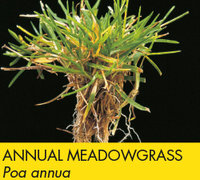
Annual Meadow-grass is a low-growing grass which is a light green colour.
It grows from a central base, to which all the shoots can be traced, and has a creeping rootstock.
The blade-like leaves are blunt-tipped and the yellow-green flower head is triangular with branched spikelets that contain the flowers.
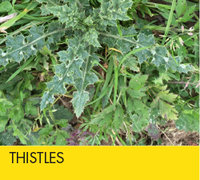
There are 150 species of thistles worldwide, with 20 in the UK
- Thistles need controlling as they compete with grass for space, light, nutrients and water
- Thistles are unpalatable to stock and reduce the available grazing, whilst increasing the incidences of Orf
- The two most common and damaging are creeping thistle and spear (Scotch) thistle
- Creeping Thistle (Cirsium arvense): A perennial that grows from seed or from root sections in the soil Once established, the root mass can be greater than the plant above ground, competing effectively with the grass
- Spear Thistle (Cirsium vulgare): A biennial that grows from seed, and in the first year often goes unnoticed, since it produces only a small rosette. In the second year the plant can grow to over a metre in diameter before flowering, posing a serious economic threat.
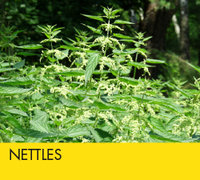
Favouring high-fertility sites, nettles spread through tough roots forming clumps
- Nettles compete with grass for light, water and nutrients and, where nettles are dense, will out-compete the sward
- Grazing stock avoids mature nettles, reducing the productivity of the swards
- Nettles in hay or silage may cause rejection by stock because of the contamination
- Best controlled in the spring when they are 30-45cm tall
- Frequently cutting nettles often results in more vigorous regrowth.

Docks (Rumex spp.) are the most pernicious and damaging of all grassland weeds.
- Docks compete with grass for light, nutrients and moisture and reduce grass yields and have less than 65% of the feed value of grass
- Docks are unpalatable and, in general, animals will only eat them if there is nothing else available. Excessive quantities of docks in the diet can cause dietary upsets, especially in young animals. When fields become infested with docks, the available grazing is reduced, which then impacts on the planned grazing cycle. Presence of docks in silage can affect fermentation, thus reducing overall quality.
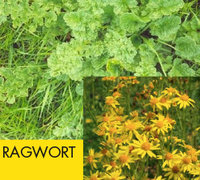
A critical weed to be able to identify, and remove, is Ragwort. This weed is potentially deadly to livestock and is listed in the Injurious Weeds Act, which occupiers can be required by law to control. Under the Ragwort Control Act (2003), a code of practice was developed giving guidance on identification, priorities for control, methods, environmental considerations, and health and safety issues.
- They have a daisy-like yellow flower, flowering from May to October
- Ragwort is a danger to all stock, but particularly horses, cattle, free-range pigs and chickens. Alkaloids cause cirrhosis of the liver and there is no known antidote
- Ragwort is largely unpalatable; ragwort may be eaten when green, particularly when other grazing is sparse. It is palatable when dead or dying because of the release of sugars, so contamination of hay or silage is very dangerous.
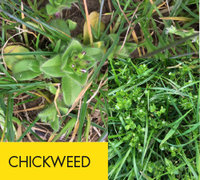
Common Chickweed is the most common annual weed and can persist in rotational grass and establish in long-term pastures where there are gaps in swards due to poaching or slurry injection.
- With a prostrate habit and fast growth, chickweed restricts tillering of establishing grass and clover and fills in bare spaces in swards
- Autumn sowings can be a problem as chickweed may overtake the slower establishing grasses and clovers, filling in bare patches
- Its high moisture content will cause difficulties when trying to wilt for silage and also upset silage fermentation affecting the feed value
- It will also mean a longer drying time for hay-making with loss of quality
- Large chickweed populations may cause digestive upset in grazing lambs and calves.
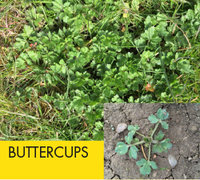
Creeping buttercup is the most common species and is a problem in heavily grazed, poached or wet pastures.
- Animals tend not to graze areas infested with buttercup as it has an acrid taste and affects grass yield and reduces hay value.

